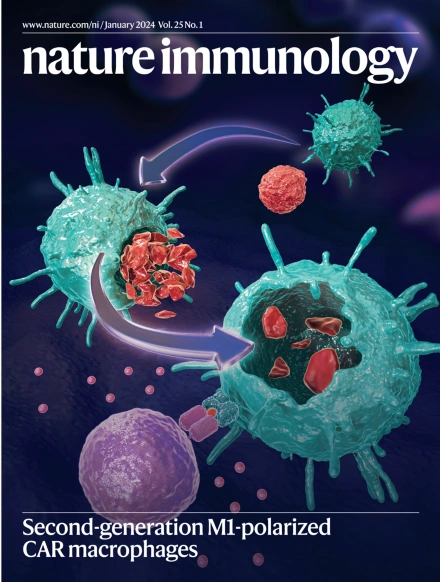坏死细胞死亡的后果与疾病的相关性。
IF 27.6
1区 医学
Q1 IMMUNOLOGY
引用次数: 0
摘要
可以说,细胞死亡研究领域最令人惊讶的发现之一是发现细胞坏死,一种对人类生理产生深远影响的溶解性和固有的混乱细胞死亡,可以通过基因编码。也没有单一的坏死途径,因为有令人信服的证据表明存在不同的坏死形式,如焦下垂、坏死下垂和铁下垂。最近分子、结构和疾病相关发现的势头为靶向坏死机制预防附带组织损伤和炎症性疾病打开了大门。在这篇综述中,我们评估了靶向坏死细胞死亡途径称为坏死下垂的情况。我们研究了人类坏死性坏死机制表达的器官和细胞类型,鉴定了淋巴细胞ZBP1、RIPK1、RIPK3和MLKL特征,回顾了坏死性坏死信号的免疫原性后果,并强调了人类参与坏死性坏死并可由缺血性损伤触发的证据。最后,我们注意到小鼠研究的一些局限性,由于与人类坏死性坏死器官的根本差异,并批判性地评估坏死性坏死作为疾病驱动因素的证据,如果成功靶向,可能具有临床益处。本文章由计算机程序翻译,如有差异,请以英文原文为准。
Necroptotic cell death consequences and disease relevance.
Arguably one of the most surprising revelations in the field of cell death research was the discovery that cellular necrosis, a lytic and inherently messy cell death with far-reaching consequences for human physiology, can be genetically encoded. There is no single necrotic pathway either, as compelling evidence exists for distinct necrotic modalities such as pyroptosis, necroptosis and ferroptosis. The recent momentum of molecular, structural and disease-relevant findings has opened the door to targeting necrotic machinery to prevent collateral tissue damage and inflammatory diseases. In this Review, we evaluate the case for targeting the necrotic cell death pathway called necroptosis. We examine the organs and cell types where the human necroptotic machinery is expressed, identifying a lymphocytic ZBP1, RIPK1, RIPK3 and MLKL signature, review knowledge into the immunogenic consequences of necroptotic signaling and highlight building evidence that necroptosis is engaged in humans and can be triggered by ischemic injuries. Finally, we note several limitations of mouse studies due to fundamental differences with the human necroptotic apparatus and critically appraise the evidence for necroptosis being a disease-driving factor that, if successfully targeted, could be of clinical benefit.
求助全文
通过发布文献求助,成功后即可免费获取论文全文。
去求助
来源期刊

Nature Immunology
医学-免疫学
CiteScore
40.00
自引率
2.30%
发文量
248
审稿时长
4-8 weeks
期刊介绍:
Nature Immunology is a monthly journal that publishes the highest quality research in all areas of immunology. The editorial decisions are made by a team of full-time professional editors. The journal prioritizes work that provides translational and/or fundamental insight into the workings of the immune system. It covers a wide range of topics including innate immunity and inflammation, development, immune receptors, signaling and apoptosis, antigen presentation, gene regulation and recombination, cellular and systemic immunity, vaccines, immune tolerance, autoimmunity, tumor immunology, and microbial immunopathology. In addition to publishing significant original research, Nature Immunology also includes comments, News and Views, research highlights, matters arising from readers, and reviews of the literature. The journal serves as a major conduit of top-quality information for the immunology community.
 求助内容:
求助内容: 应助结果提醒方式:
应助结果提醒方式:


